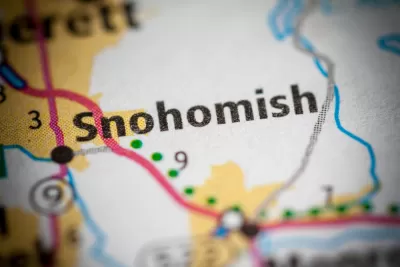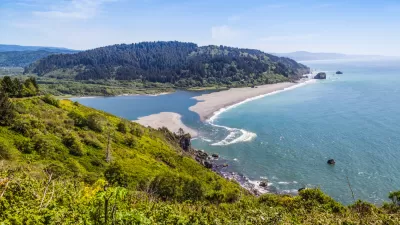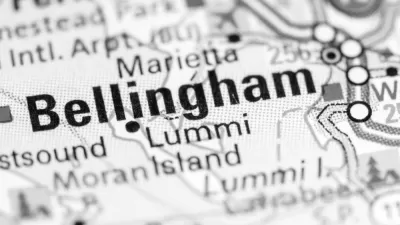Two dams have been removed from watersheds in Washington State in as many months.

"Washington’s dam-busting summer is still rolling, with two more dams coming down on the Pilchuck River, opening 37 miles of habitat to salmon for the first time in more than a century," reports Lynda V. Mapes.
"The $2 million dam removal project is a collaboration between the City of Snohomish and Tulalip Tribes, and will benefit multiple species of salmon, including threatened chinook salmon, crucial food for endangered southern resident killer whales," adds Mapes.
"It’s the state’s second dam teardown project in two months. In July, the city of Bellingham blew up its Nooksack Diversion Dam on the Middle Fork of the Nooksack River, opening 16 miles of habitat for salmon, including chinook." Planetizen picked up news of the Bellingham dam removal, noting the long precess that enabled that historic dam removal.
Maps provides more background on how the dam removal on the Pilchuk River came to be. Hint: it came down to simple question of cost.
A separate article by Tara Lohan, written in 2018, details the lessons in ecosystem restoration that have emerged from another dam removal in Washington State—the dam removal on the Elwha River, which is considered the world's largest dam removal project.
Now two more watersheds in the state are hoping for the kind of recovery of critical species as has been seen on the Elhwa River since the 105-foot-tall Elwha Dam and 210-foot-tall Glines Canyon Dam were removed in 2011 and 2014, respectively.
FULL STORY: Another Washington dam removal — and 37 more miles of salmon habitat restored

Planetizen Federal Action Tracker
A weekly monitor of how Trump’s orders and actions are impacting planners and planning in America.

Map: Where Senate Republicans Want to Sell Your Public Lands
For public land advocates, the Senate Republicans’ proposal to sell millions of acres of public land in the West is “the biggest fight of their careers.”

Restaurant Patios Were a Pandemic Win — Why Were They so Hard to Keep?
Social distancing requirements and changes in travel patterns prompted cities to pilot new uses for street and sidewalk space. Then it got complicated.

Platform Pilsner: Vancouver Transit Agency Releases... a Beer?
TransLink will receive a portion of every sale of the four-pack.

Toronto Weighs Cheaper Transit, Parking Hikes for Major Events
Special event rates would take effect during large festivals, sports games and concerts to ‘discourage driving, manage congestion and free up space for transit.”

Berlin to Consider Car-Free Zone Larger Than Manhattan
The area bound by the 22-mile Ringbahn would still allow 12 uses of a private automobile per year per person, and several other exemptions.
Urban Design for Planners 1: Software Tools
This six-course series explores essential urban design concepts using open source software and equips planners with the tools they need to participate fully in the urban design process.
Planning for Universal Design
Learn the tools for implementing Universal Design in planning regulations.
Heyer Gruel & Associates PA
JM Goldson LLC
Custer County Colorado
City of Camden Redevelopment Agency
City of Astoria
Transportation Research & Education Center (TREC) at Portland State University
Camden Redevelopment Agency
City of Claremont
Municipality of Princeton (NJ)




























